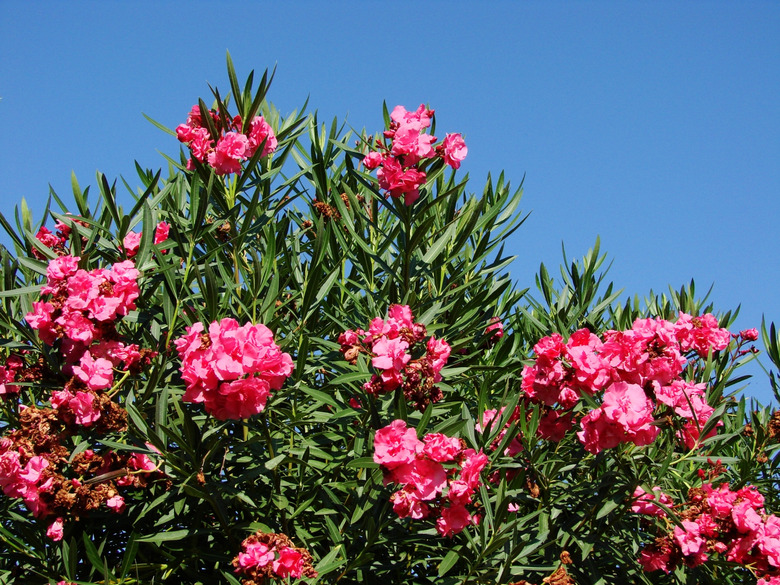How To Prune And Care For Oleander Plants
We may receive a commission on purchases made from links.
A hardy and attractive plant, oleander (Nerium oleander, USDA plant hardiness zones 8-10) enjoys a good trim on a regular basis. The bushy branches of the oleander can reach dizzying heights if left unattended and look ragged and old, rather than crisp, colorful and attractive. Whether you have a classic oleander towering over your yard or a young plant with new shoots attempting to get out of control, trimming the tree will keep it in good condition and looking its best.
Exercise caution when pruning your oleander, because all plant parts are toxic and can be fatal if eaten. Even handling the plant can cause contact dermatitis for sensitive people. Wear gloves and eye protection. Bag and discard the trimmings instead of burning them, which can release noxious fumes.
Types of Oleanders
Types of Oleanders
There are many cultivars of the flowering shrub that grow so well in a wide variety of conditions. The abundance of its whorled flowers makes it an ideal shrub that can grow tall to offer an attractive border wall and subsequent privacy or grow in pots as a prolific evergreen green bush year-round in its perennial range with distinctive blooms in spring and fall.
Shrubs can grow from a manageable 3 feet to 20 feet tall with a spread up to 10-feet wide. There are more than 50 cultivars. The oleander cultivar, 'Hardy Pink,' is one of the more popular types that rises to 15 feet tall and 10 feet wide with proper care. It offers pink blossoms all summer long. 'Mrs. Lucille Hutchings' is a double flower with peachy pink-hued blossoms and is one of the tallest. 'Pink Beauty' doesn't carry the distinct fragrance as its oleander cousins for those with a preference for less aroma.
When to Trim an Oleander
When to Trim an Oleander
An oleander, regardless of its size, should only be trimmed at certain times of the year. If it is cut back or even trimmed slightly at its tender tips during the wrong time of year, it can damage the plant. No matter what type of oleander you have planted or inherited, it needs a good trim at least once a year to keep it in its best form. The end of August or the first few weeks of September is the perfect time to snip off burgeoning branches that may be crowding other plants and trees or edging into walkways or entrances. This gives new growth plenty of time to harden before the cold air can damage the tender branches.
How to Trim Oleander
How to Trim Oleander
Remove dead branches at the root or where they extend from a healthy branch at the point of attachment. Any broken limbs from the billowy evergreen bush should be cut at the connection to the main tree with a clean cut. Branches that cut across each other should be removed so that the new growth can get the proper amount of sunlight and shoot for the sky without obstacles. If the oleander is rather tall, begin at the bottom and slowly make your way to the middle, watching out for heavy branches that may tumble from above.
